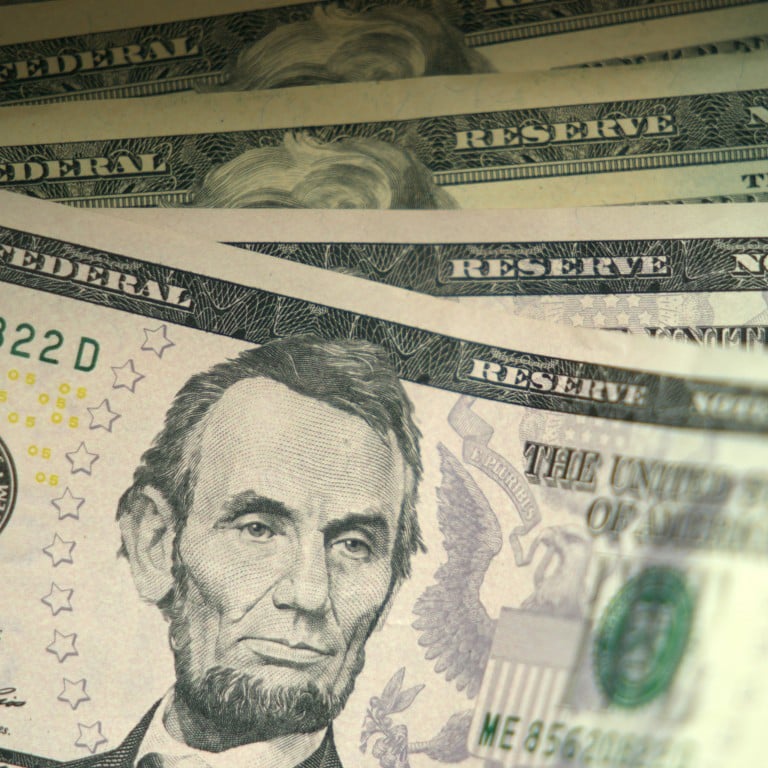
US Fed rate cut alone won’t steady a global economy shaken by the coronavirus
- The dramatic spike in demand for safe-haven 10-year Treasuries, raising the spectre of an inverted yield curve, is a sign that markets expect more from the Fed
- The central bank must ensure access to US dollar liquidity remains open, at a time spooked consumers stockpile certain goods and banks stockpile US dollars
Access to liquidity, the availability of money, matters just as much as the price of money in times of crisis.
Admittedly, as Powell pointed out, a rate cut will not reduce the rate of infection, or fix a broken supply chain, but it will “support accommodative financial conditions and avoid a tightening of financial conditions which can weigh on activity, and it will help boost household and business confidence”.
In any crisis, risk aversion drives money into liquid assets that are perceived to be safe havens, such as US government bonds, and more particularly into longer-dated paper to lock in the term premium. That premium reflects the extra return investors generally expect to receive for lending for longer periods rather than shorter-dated maturities.
Ordinarily, the yield curve therefore slopes upwards, reflecting the prevailing term premium investors expect at that time. But when, as recently, the safe haven demand for 10-year US Treasuries increases dramatically, the move upwards in the price of that longer-dated paper starts to change the shape of the yield curve, given that bond yields always fall when bond prices rise. Rather than sloping upwards, the yield curve flattens as the term premium erodes.
Ultimately, the yield curve can invert, with longer-dated yields falling below those available in shorter-dated maturities.
Yield curve flattening or inversion undermines the foundation of global bank lending, predicated as it is on the ability of lenders to earn more from making longer-dated loans than they pay out to finance their loan books through shorter-dated borrowing.
Why bad news is no longer good news for stock markets
In such circumstances, banks can be less inclined to advance loans, potentially exacerbating an existing crisis, even one that has non-financial origins, like the coronavirus outbreak.
By cutting its benchmark interest rate, the Fed, or indeed any central bank, seeks to bear down on interest rates in the short end of the yield curve in the hope that the rate cut will not weigh so much on longer-dated yields, and so translate into some degree of yield curve steepening.
But no central bank, not even the Fed, can know at the time how deep benchmark rate cuts need to go to achieve the hoped-for outcome. The Fed may well have to do more, as financial markets expect.

But central banks must also consider liquidity. Liquidity really matters – it is access to money, and to a large extent that means access to US dollar liquidity, that keeps the global financial system functioning smoothly.
In times of crisis, consumers may be inclined to stockpile certain goods. Banks may be inclined to stockpile US dollars, as occurred during the global financial crisis, not only to ensure their ability to finance their own loan books but also out of concerns about the creditworthiness of other financial institutions.
Additionally, successive US administrations have used fiscal policy to encourage US corporations to repatriate greenbacks previously held offshore for tax reasons. That has eaten into the volume of offshore US dollar deposits, usually referred to as eurodollars, held in financial institutions outside the United States.
Covid-19 hitting China, South Korea harder than expected in short term
Less availability of Eurodollar deposits has seen increased reliance on the foreign exchange swap market to fill the funding gap but, if the coronavirus outbreak prompts US lenders to be less inclined to supply greenbacks for overseas institutions to swap into, it would be problematic for banks outside the US seeking to fund their dollar loan books.
Meanwhile, coronavirus-related disruption to global trade will surely affect firms that invoice in US dollars, including very many in China, who have seen income flow interrupted but must still service US dollar debt obligations. The Fed may have to reactivate central bank liquidity swap lines, providing US dollars to foreign central banks which can then be deployed locally as needed.
Monetary policy can be an “effective tool to support overall economic activity” during the coronavirus crisis, Powell said last week. He is right, but that monetary policy response must extend beyond rate cuts.
Neal Kimberley is a commentator on macroeconomics and financial markets

